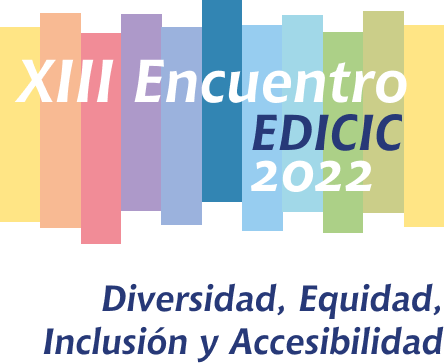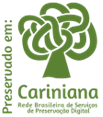Social curatory in digital curatory processes and reconstruction of the cultural heritage of humanity: Web 2.0 initiatives
DOI:
https://doi.org/10.62758/re.v2i4.181Keywords:
Digital Curation, Information and Communication Technologies , Social Curation, Design Thinking, Participatory ApproachAbstract
The advent of electronic Information and Communication Technologies made possible a hybrid communication of museum collections, making itself present in face- to-face and digital-virtual environments. Such hybridization of the communicational aspect of museums is seen as an extension of these institutions and as an expansion of the means of access to institutionalized memory and of the forms of interaction with informational subjects and their communities of interest. However, the presentation of collections in the digital environments of museums demands the Digital Curation of museological objects, which makes it possible to work in a fluid way in these environments, enhances and multiplies the performance in different contexts and on multiple platforms available to communities of interest. The objective was to study a form of Digital Curation that contemplates social participation, that is, a curation model in which the community participates in its processes, and, consequently, feels represented, with a participatory, horizontal and inclusive approach. The methodology is descriptive and exploratory, with a literature review and research on web environments and initiatives that disclose the practice of social curation. In the international context, some authors have addressed the social aspect of curation through the participatory approach. However, it was not possible to identify national authors who approach this perspective in the literature. The study observed that the Museu da Pessoa is pioneer in collaborative curation. International initiatives demonstrate the openness to participatory curation, transforming the community into cultural heritage curators. Netizens have become co-curators of cultural memories in digital-virtual environments, and the curation can now count on the participation of the community in the reconstruction of the narratives of cultural heritage in hybrid environments. Participatory approach promotes equity in the relationship between the institution and society, democratizing access to transcultural heritage and enabling Social Curation.
References
Acess to Memory (2021). Artefactual System, New Westminster. https://www.accesstomemory.org/pt-br/.
Archivematica (2021). Artefactual System, New Westminster https://www.archivematica.org/pt-br/.
Beagrie, N. (2004). The Digital Curation Centre. Learned Publishing, 17(1), 7-9. https://onlinelibrary.wiley.com/doi/epdf/10.1087/095315104322710197. DOI: https://doi.org/10.1087/095315104322710197
Cagigal, P. (2017). Los museos como mediadores de la memoria en la era digital: museums as mediators of memory in the digital age. Revista de arte contemporáneo, 1(3), 22-30. https://dialnet.unirioja.es/servlet/articulo?codigo=6038975. DOI: https://doi.org/10.26807/cav.v0i03.47
Cidoc (2020). What is LIDO. Berlin. http://cidoc.mini.icom.museum/working-groups/lido/what-is-lido/. Acess in: 28 jan. 2021.
Conarq (2015). Diretrizes para a implementação de resitórios arquivísticos digitais confiáveis-RdC-Arq. Rio de Janeiro. http://www.conarq.gov.br/images/publicacoes_textos/diretrizes_rdc_arq.pdf.
DCC (2004). What is curator. Edinburgh. https://www.dcc.ac.uk/about/digital-curation.
DSPACE. Lyrasis, Atlanta. https://duraspace.org/dspace/.
Dublin Core. https://dublincore.org/.
EAD (2013). Development of the encoded archival description DTD. Library of Congress. https://www.loc.gov/ead/eaddev.html.
Fontoura, R. (2020). Colares que bipam e bastões coloridos e o novo normal nos museus. Brasília: ANESP. http://anesp.org.br/todas-as-noticias/2020/6/11/colares-que-bipam-e-bastes-coloridos-e-o-novo-normal-nos-museus.
Gil, A. C. (2008). Métodos e técnicas da pesquisa social. 6. ed. São Paulo: Atlas. https://ayanrafael.files.wordpress.com/2011/08/gil-a-c-mc3a9todos-e-tc3a9cnicas-de-pesquisa-social.pdf.
Higgins, S. (2007). Draft DCC Curation Lifecycle Model. The International Journal of Digital Curation, 2(2), 82-87. http://www.ijdc.net/article/view/46/30. DOI: https://doi.org/10.2218/ijdc.v2i2.30
Higgins, S. (2008). The DCC curation lifecycle model. The International Journal of Digital Curation, 3(1), 134- 140. http://www.ijdc.net/article/download/69/48/0. DOI: https://doi.org/10.2218/ijdc.v3i1.48
Higgins, S. (2011). Digital Curation: the emergence of a new discipline. The International Journal of Digital Curation, 6(2), 78-88. http://www.ijdc.net/article/view/184/251. DOI: https://doi.org/10.2218/ijdc.v6i2.191
ICOM (2020). How to reach – and engage – your public remotely. Paris. https://icom.museum/en/news/how-to-reach-and-engage-your-public-remotely/.
Kahn, K. (2018). O papel do Design da Informação na curadoria digital de sistemas memoriais: um estudo do Museu da Pessoa [Mestrado em Ciência da Informação, Faculdade de Filosofia e Ciências – Marília. Repositório Institucional Unesp. https://repositorio.unesp.br/handle/11449/153993. DOI: https://doi.org/10.22478/ufpb.1981-0695.2017v12n1.34091
Lampert, S. R. (2016). Os repositórios DSpace e archivematica para documentos arquivísticos digitais. Acervo, Rio de Janeiro, 29(2), 143-154. http://www.arquivistica.fci.unb.br/acervo-revista-do-arquivo-nacional/os-repositorios-dspace-e-archivematica-para-documentos-arquivisticos-digitais/.
Longo, E. (2020). The ultimate guide to virtual museum resources, e-learning, and online collections. Blog Advancing Digital Transformation in Museums, Nova York. https://mcn.edu/a-guide-to-virtual-museum-resources/.
Lord, P. & Macdonald, A. (2017). E-Science curation report: Data curation for e-science in the UK: an audit to establish requirements for future curation and provision. Reino Unido: The JISC Committee for the Support of Research.
MARC 21: Conteúdo (2008). Divisão de Bibliotecas e Documentação da Pontifícia Universidade Católica do Rio de Janeiro. https://www.dbd.pucrio.br/MARC21/conteudo.html.
Meehan, N. (2020). Digital museum objects and memory: postdigital materiality, aura and value. Curator: The Museum Journal, 23(1). https://onlinelibrary.wiley.com/toc/21516952/0/0.
Mets: metadata encoding & transmission standards (2021). Library of Congress. https://www.loc.gov/standards/mets/.
Minayo, M. C. S. & Sanches, O. (1993). Quantitativo-qualitativo: oposição ou complementaridade? Cad. Saúde Públ., 9(3), 239-262. https://www.scielo.br/j/csp/a/Bgpmz7T7cNv8K9Hg4J9fJDb/?lang=pt&format=pdf. DOI: https://doi.org/10.1590/S0102-311X1993000300002
Museu da Pessoa (2020). Vidas indígenas. São Paulo. https://benfeitoria.com/vidasindigenas.
Nemo (2020). Survey on the impact of the COVID-19 situation on museums in Europe Final Report. Berlin. https://www.ne-mo.org/fileadmin/Dateien/public/NEMO_documents/NEMO_COVID19_Report_12.05.202.
NHA (2020). Transcribe the colletions. Nantucket. https://nha.org/research/the-collections/transcribe-the-collections/.
NHA (2020). Activity Stream. Nantucket. https://fromthepage.com/sma-archives/city-of-seattle-records. Acess in: 15 jan. 2021.
North Carolina Museum of Art (2021). North Carolina. https://ncartmuseum.org/calendar/series_parent/ncma_from_home.
Oais: Reference model for an open archival information system (2012). Washington: Magenta Book. https://public.ccsds.org/Pubs/650x0m2.pdf.
Popple, S. & Mutibwa, D. H. (2016). Tools you can trust? co-design in community heritage work. In: Borowiecki, K. J., Forbes, N. & Fresa, A. (Eds.). Cultural heritage in a changing world. Switzerland: Springer. DOI: https://doi.org/10.1007/978-3-319-29544-2_12
Premis (2021). Preservation metadata maintenance activity. Library of Congress. https://www.loc.gov/standards/premis/.
Rios Perez, S. de los et al. (2016). Technologies lead to adaptability and lifelong engagement with culture throughout the cloud. In: Borowiecki, K. J., Forbes, N & Fresa, A. (Eds.). Cultural heritage in a changing world. Springer.
Roda. https://www.roda-community.org/#welcome.
Sabharwal, A. (2015). Digital curation in the digital humanities: preserving and promoting archival and special collections. Elsevier. DOI: https://doi.org/10.1016/B978-0-08-100143-1.00001-5
Sayão, L. F. (2010). Uma outra face dos metadados: informações para a gestão da preservação digital. Encontros Bibli: revista eletrônica de biblioteconomia e ciência da informação, 15(30), 1-31. https://periodicos.ufsc.br/index.php/eb/article/view/1518-2924.2010v15n30p1. DOI: https://doi.org/10.5007/1518-2924.2010v15n30p1
Schilling, S. (2016). Change of museums by change of perspective: reflecting experiences of museum development in the context of “EuroVision—Museums Exhibiting Europe” (EU Culture Programme). In: Borowiecki, Karol Jan, Forbes, Neil & Fresa, Antonella (Eds.). Cultural heritage in a changing world. Springer. DOI: https://doi.org/10.1007/978-3-319-29544-2_9
Simon, N. (2010). The participatory museum. California: Museum 20. https://tomskmuseum.ru/content/editor/Posetitel/Opit%20kolleg/Muzej-v-kontekste-kultury-uchastiya.pdf.
Trant, J. (2006). Exploring the potential for social tagging and folksonomy in art museums: proof of concept. New Review of Hypermedia and Multimedia. https://www.researchgate.net/publication/220590177_Exploring_the_potential_for_social_tagging_and_folksonomy_in_art_museums_Proof_of_concept. DOI: https://doi.org/10.1080/13614560600802940
Unesco (2020). Museums around the world: in the face of COVID-19. Unesco Report. Paris. https://en.unesco.org/news/launch-unesco-report-museums-around-world-face-covid-19.
Zuanni, C. (2020). Digital responses from locked-down museums. Cultural Practices, Reino Unido. https://culturalpractice.org/digital-responses-from-locked-down-museums/.
Yarn Community (2015). http://yarncommunity.com/.
Downloads
Published
How to Cite
Issue
Section
License
Copyright (c) 2022 Revista EDICIC

This work is licensed under a Creative Commons Attribution 4.0 International License.
The Association holds the copyright of the texts it publishes and, therefore, adopts a Creative Commons License, CC BY 4.0 DEED Attribution 4.0 International (https://creativecommons.org/
You are free to:
- Share: copy and redistribute the material in any medium or format for any purpose, even commercially.
- Adapt: remix, transform, and build upon the material for any purpose, even commercially.






